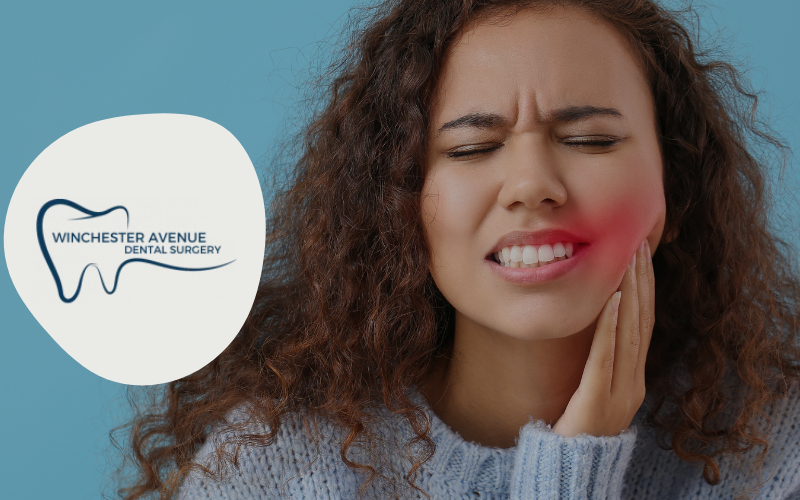Throbbing pain after tooth extraction – no dry socket
After a tooth extraction, it's common for patients to experience some form of discomfort or pain, which typically peaks within the first few days. Among these sensations, throbbing pain is quite frequent, yet many patients might worry that this symptom signals something more serious, like dry socket. However, throbbing pain after tooth extraction doesn't always indicate dry socket, and understanding this can help manage expectations and alleviate concerns.
Post-extraction pain
After a tooth is extracted, experiencing some pain is normal. This pain, ranging from mild discomfort to intense throbbing, usually peaks within the first 48 to 72 hours after the procedure. It typically originates from the area where the tooth was removed and can radiate to the surrounding jaw and face.

What’s happening in your mouth?
When you undergo a tooth extraction, your body initiates a healing process that can sometimes be painful. This throbbing pain is primarily due to the response of tissues and nerves that were disturbed during the extraction. It's your body’s way of telling you that the healing is underway. The intensity of the pain can vary based on the complexity of the extraction, your pain tolerance, and adherence to post-operative care instructions.
Throbbing pain vs. dry socket
It's important to differentiate between normal post-operative throbbing pain and dry socket:
Throbbing pain: This is a normal reaction to the trauma caused by tooth extraction. It's usually manageable with prescribed pain medication and home remedies like cold compresses and should gradually subside within a few days.
Dry socket: This occurs when the blood clot at the site of the tooth extraction fails to develop, or it dislodges prematurely, exposing the underlying bone and nerves. This condition is not only painful but also delays the healing process and requires additional dental treatment.
Managing throbbing pain after tooth extraction
Cold compresses - Applying a cold compress to the cheek near the extraction site can help reduce swelling and numb the nerves, decreasing pain. Use the cold compress intermittently—15 minutes on and 15 minutes off—during the first 24 hours post-extraction.
Pain relief medication - Over-the-counter pain relievers such as ibuprofen or paracetamol can be very effective. Always follow the dosage instructions provided by your dentist at Winchester Avenue Dental Surgery or as per the packaging, and consult with us if you're unsure what to take.
Keep your head elevated - When resting, keep your head elevated with pillows to reduce bleeding and swelling, which in turn lessens the pain.
Rest - In the first few days post-extraction, rest is key. Avoid any heavy lifting or vigorous exercise as it can increase blood pressure and may cause the extraction site to bleed, leading to increased pain.
Keep good oral hygiene - Keeping the mouth clean is essential. However, avoid vigorous rinsing or spitting for the first 24 hours to not disturb the blood clot formed in the socket. After this period, gently rinse with warm salt water after meals and before bed.
What is a dry socket?
Dry socket, or alveolar osteitis, is a painful condition that can occur when the protective blood clot in the socket is dislodged too soon. Exposing underlying bones and nerves leads to severe pain and discomfort. If you notice symptoms of dry socket, such as severe pain a few days post-extraction, a foul taste, or bad breath, contact Winchester Avenue Dental Surgery immediately for appropriate care.
When to contact Winchester Avenue Dental Surgery
If your throbbing pain persists for more than a few days, intensifies over time, or is accompanied by signs of infection such as fever, foul taste, persistent bad breath, or visible pus, it’s important to contact Winchester Avenue Dental Surgery. These symptoms could indicate a complication like an infection or even a dry socket, which need to be addressed promptly to ensure a smooth recovery.
Frequently asked questions - throbbing pain
Is it normal for a tooth extraction site to throb?
Yes, it is normal for a tooth extraction site to throb. This throbbing pain is part of the natural healing process as the area recovers and should start to diminish within a few days after the extraction.
How do I know if dry socket is forming?
Signs of dry socket include intense pain a few days after the extraction, a partially or fully dislodged clot at the extraction site, visible bone within the socket, and sometimes an unpleasant taste or smell from the mouth. If you suspect dry socket, see your dentist at Winchester Avenue Dental Surgery as soon as possible for treatment!
Can a partial dry socket heal on its own?
A partial dry socket can sometimes heal on its own if there’s enough blood clot remaining to protect the bone and nerves while the healing continues. However, it can be quite painful and prone to infection, so professional treatment by a dentist is often recommended to ensure proper healing and to manage pain.
How long does the mouth throb after tooth extraction?
Mouth throbbing is common after tooth extraction and usually subsides within a few days. If the throbbing persists beyond a week or worsens, it may indicate a complication and you should seek advice from your dentist.
Should I still have pain 5 days after tooth extraction?
It's not uncommon to have some pain 5 days after a tooth extraction, especially if it was a complicated procedure. However, the pain should be gradually decreasing. If the pain persists or worsens, it's a good idea to consult your dentist to rule out any complications such as infection or dry socket.
